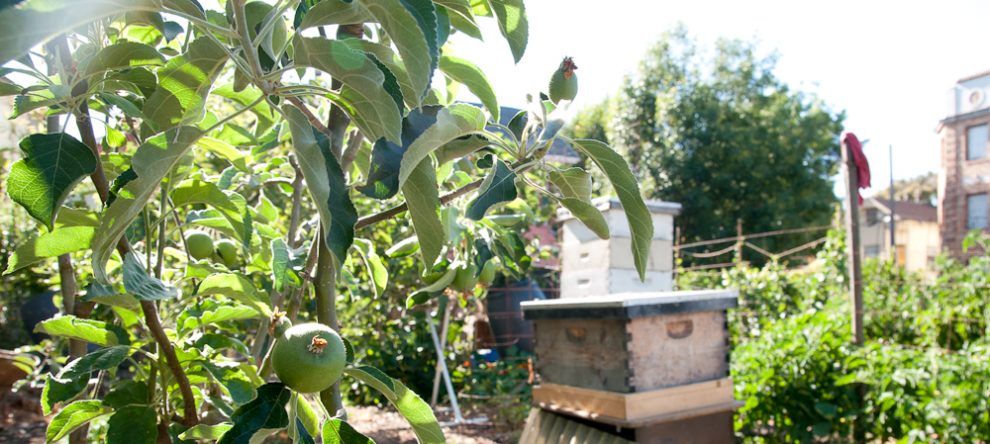In my squalid kitchen, cheesemaking has officially begun!
More than two years ago I ordered chevre culture from New England Cheesemaking Company, promptly stuck it in my freezer, and forgot all about it. I had just befriended a guy in Berkeley who had goats and I had delusions of getting milk from him. It didn’t happen. But now, oh now, I can finally make my own.
But it’s not like I have an excess of milk. I’ve resorted to milking Bebe only once a day (Fiasco Farm said she does this, with healthy results, for over 10 years). Just as I get less milk from my Nigerian Dwarf goats, who work great in small backyards, I don’t mind getting less milk if it means I don’t have to milk twice a day. It’s not like I’m in the cheese business! I let Orla, Bebe’s daughter have access to her mom during the day (she’s milking for me!) and pen her up at night so I get the morning milk.
So, it took me four days to stockpile half a gallon of Bebe’s sweet, creamy milk. The directions on the chevre package said to add one packet to a gallon of milk, so I just heated up the milk to 86 degrees, and sprinkled in what looked like half the package. It was hard to see four days worth of milk used in an experiment like this. What if it didn’t work?
For 12 hours, the cheese set up in an undisturbed area. I heard that the culture can be finicky, so I didn’t peek at all. That night, when I finally looked into the bowl, the milk had pulled away from the sides and had two distinct layers: there was just this creamy, yogurt-like substance, which I ladled into cheese cloth, and the clear liquid, the whey, which I put in a bottle for drinking later.
I hung the cheese to drain, above the sink, using (as you can see) the rope from our cheap blinds. For using only half a gallon of milk, this cheese ball seemed massive! Of course, it was mostly residual whey. The next morning, the ball was deflated and hard. I peeled off the cheesecloth and viola! A white cluster of something—cheese—in the shape of a deflated ball of cheese. I whipped it up, a bit, added a shake of salt, and then, like I saw at Dee Harley Goat Cheese, molded it into plastic wrap with a bunch of pepper sprinkled on it.
How’s it taste? Pretty good, but it’s a little dry, and not as creamy as I had hoped. Later I read that I’m supposed to put the curds into these plastic cups with holes in them, and let the cheese drain for two days. So what I made was fomage blanc. Now I need to buy–or make–some chevre cheese molds. Then I want to try making St. Maure–a penicillin infused goat cheese. And, with the right cultures, there’s some hope of making mozzarella.













